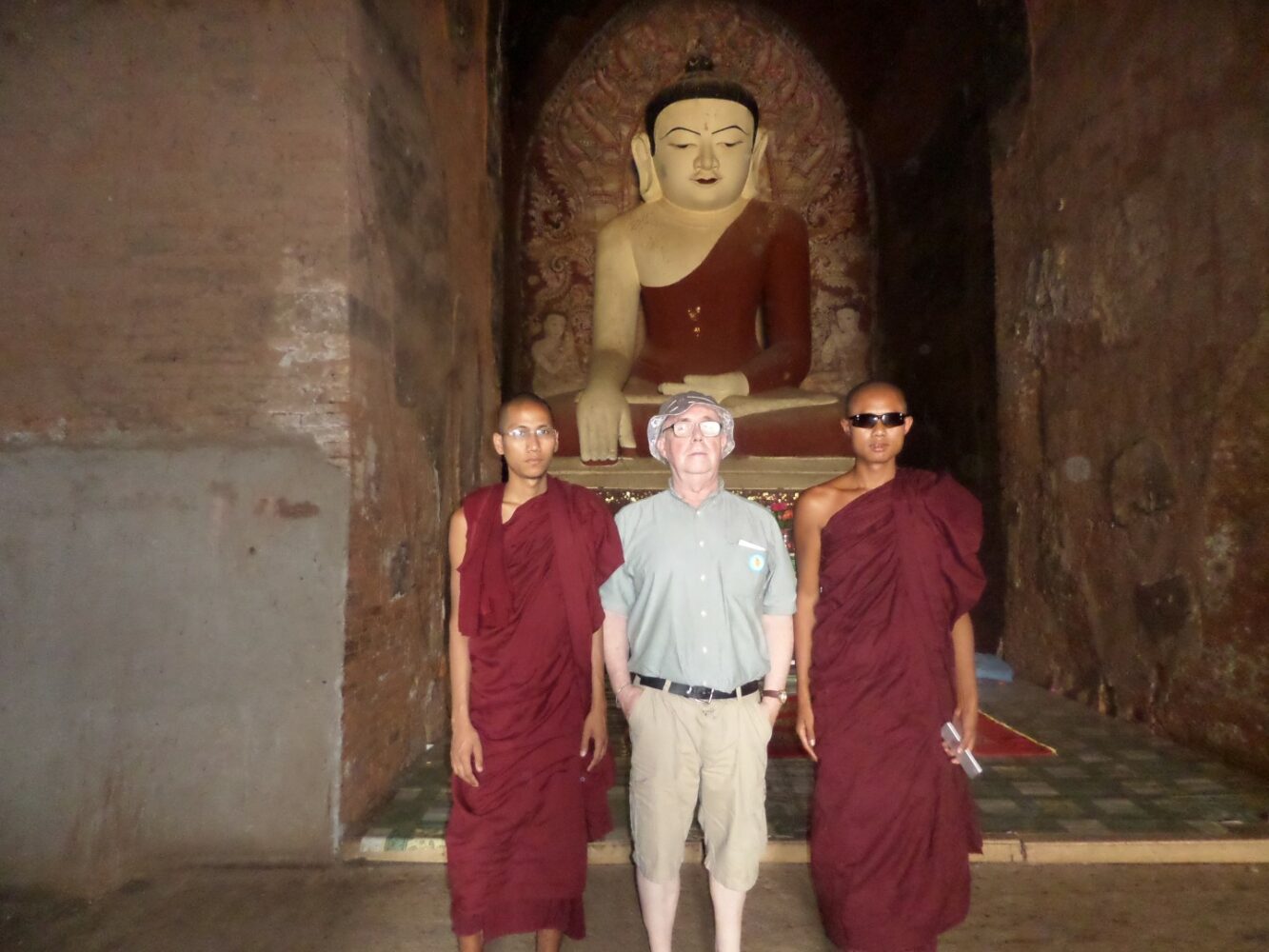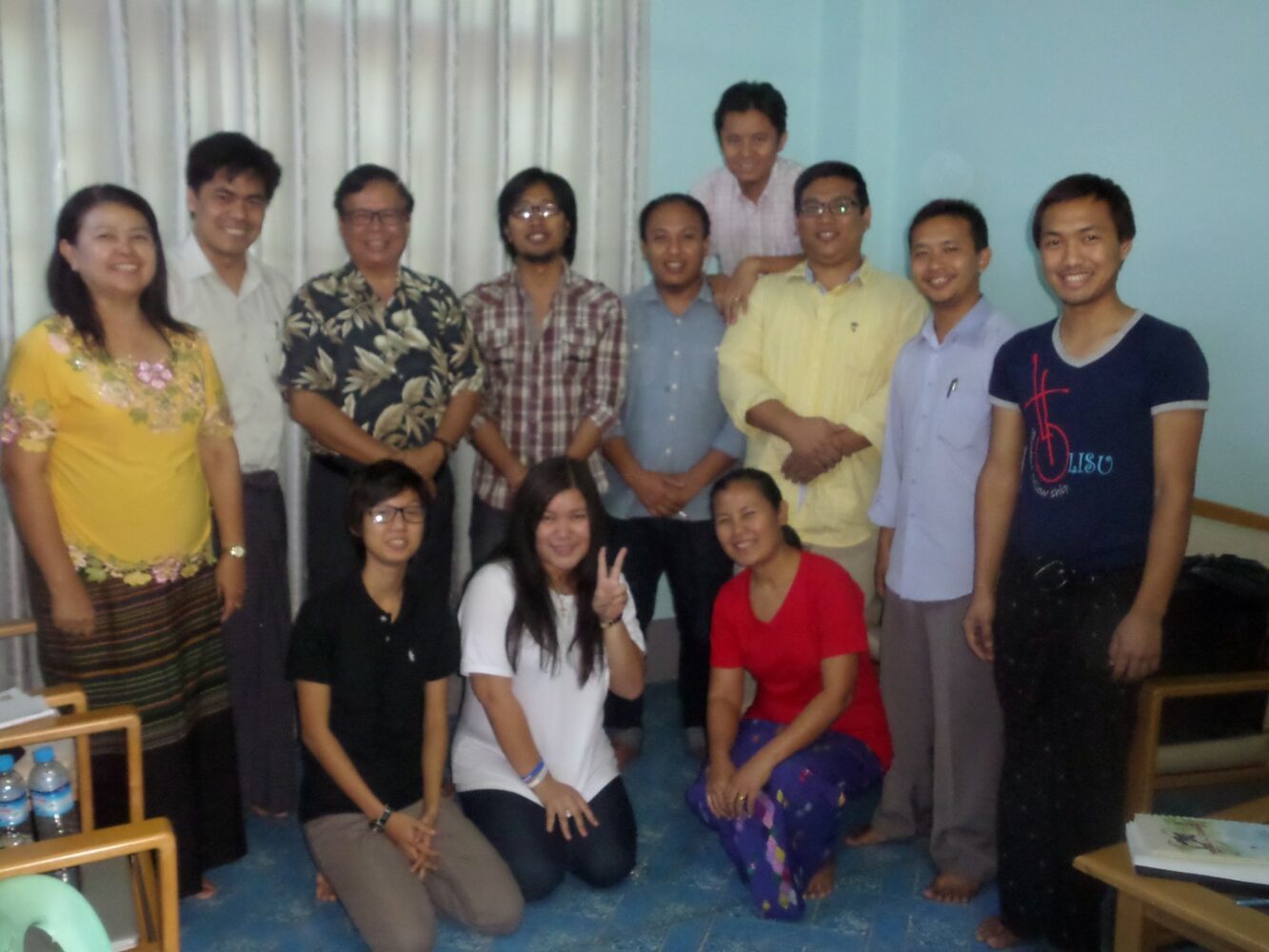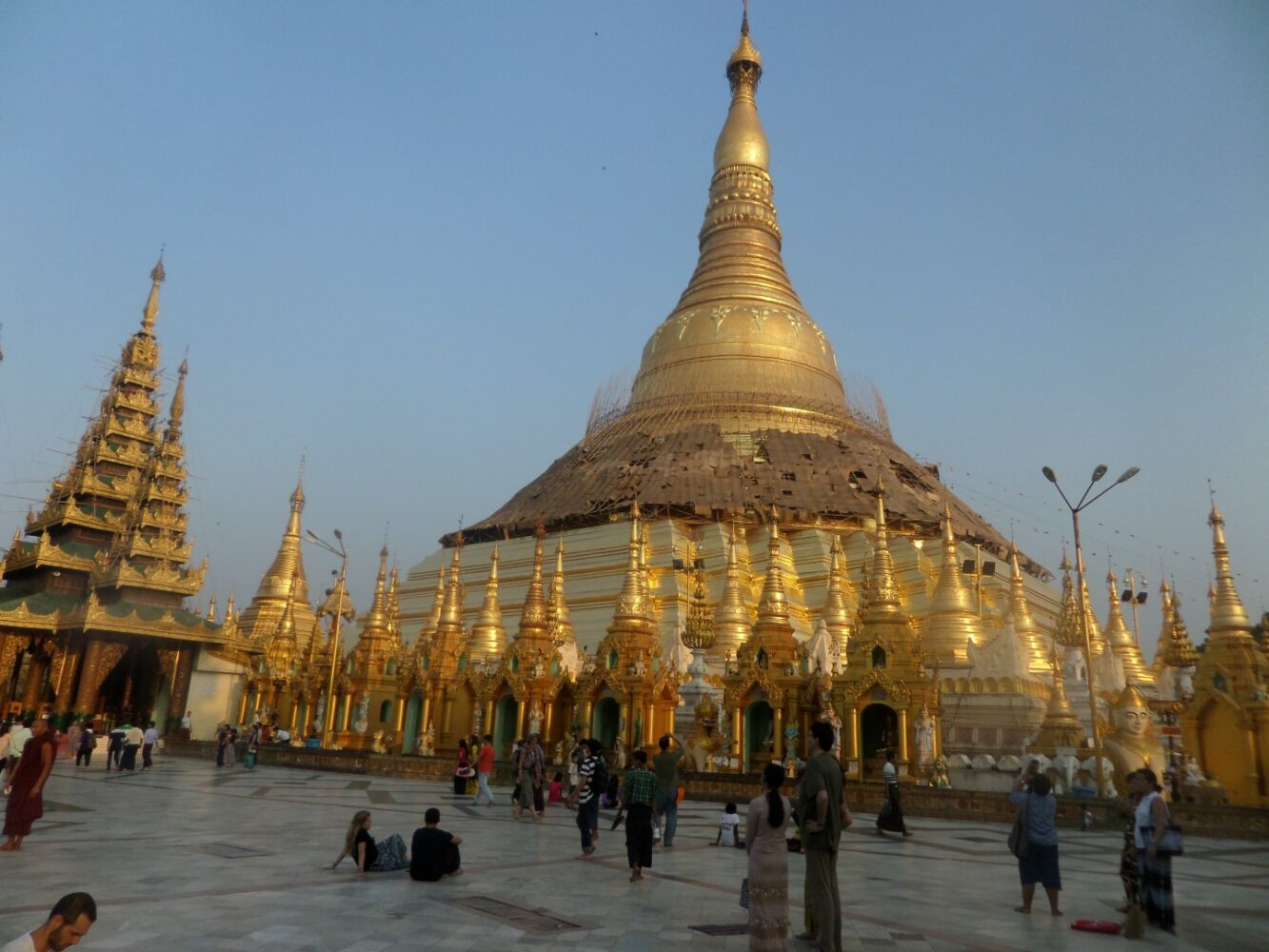The Two Faces of Myanmar

Dr. Charles P. Webel
International and Economic Relations Faculty
Myanmar (formerly Burma) is a developing country sandwiched between India, China, and Thailand.
Famous for its wondrous temples and 2500-year old Buddhist culture and traditions, Myanmar has been driven by internal conflicts for decades. Accordingly, there are two faces of Myanmar: the golden images of its pagodas and people on the one hand, and the blood-stained soil and traumatized conflict victims on the other hand.
For two weeks in mid-March, I was a Fulbright Specialist, under the aegis of the Bureau of Cultural and Educational Affairs of the United States Dept. of State, and the Council on International Educational Exchange. I was sent to Myanmar to lecture and teach “Conflict Analysis” and “Conflict Transformation” at the Myanmar Institute of Theology (called MIT) to postgraduate students, as well as to Myanmar’s future leaders in theology and political reconciliation, mostly Christian (a quite influential religious minority), but also Buddhists (the religious majority). I also met frequently with the administrators of a new Master’s program in Peace Studies at MIT as well as with State Dept. officials at the American Embassy in Yangon, the former capital of the country.
In addition, I traveled to the cultural and religious heart of the country, Bagan, a vast, hot (daytime temperatures exceed 42C), and arid plain with thousands of surviving Buddhist temples (called pagodas), many of them more than 1000 years old. I also traveled solo around Yangon, visiting a few of its pagodas, the most stunning of which is Shwedagon (“The Golden Pagoda”), a huge and dazzling monument to the Buddha, which legend holds to be about 2500 years old.
Myanmar is a country rich in jade and other precious jewels, as well as oil, natural gas, and other mineral resources. According to Wikipedia, in 2013 Myanmar’s GDP stood at about US$57 billion, which means the average per capita income is a little more than $1000 per annum, making it one of the poorest countries in Asia. Moreover, the income gap in Myanmar is among the widest in the world, since much of the economy is controlled by the army and by supporters of the former military government. According to the Human Development Index (HDI), Myanmar also has a low level of human development. And the country also ranks very low in terms of health care, according to the World Health Organization.
The British conquered Burma (the country’s ancient name) after three Anglo-Burmese Wars in the 19th century, and Burma became a British colony. Burma won its independence from Great Britain in 1948, thanks largely to General Aung San, a national hero, and father of Aung San Suu Kyi, aka “The Lady,” international icon of nonviolent and democratic political change and Nobel Peace Prize Laureate.
Following a coup in 1962, a military dictatorship, led for decades by General Ne Win, took and held absolute power until a few years ago. In 1989, the military government officially changed the English translations of many names dating back to Burma’s colonial period or earlier, including that of the country itself: “Burma” became “Myanmar.” The renaming remains a contested issue. Many political and ethnic opposition groups and countries continue to use “Burma” because they do not recognize the legitimacy of the ruling military government or its authority to rename the country.
Myanmar’s territory today can be traced to the important Panglong Agreement, which combined Burma Proper and the Frontier Areas, which had been administered separately by the British but many of which currently are conflict zones involving deadly skirmishes between many of the approximately 16 armed ethnic groups and the Burmese military. This Agreement was negotiated in 1947 by the Bamar (the ethnic majority in Burma), Aung San, and other ethnic leaders. The Panglong agreement ratified “Full autonomy in internal administration for the Frontier Areas” in principle and envisioned the creation of a Kachin State (near the Chinese border).
Many Burmese do not believe that the government has adhered to this agreement, thus leading to much ethnic strife and civil unrest, and many of Myanmar’s ethnic groups have been involved in one of the world’s longest-running ongoing civil wars. The United Nations and several other international organizations have reported consistent and systematic human rights violations in the country. There is, accordingly, continuing international and internal criticism of the government’s treatment of its ethnic minorities, especially the Muslim Rohingya and the Kachin, as well as the army’s violent responses to the religious and ethnic minorities’ desires for greater autonomy from the central government. On a more peaceful note, in 1961, U Thant was elected Secretary-General of the United Nations, a position he held for 10 years.
Although the military retains enormous influence, it has taken some steps toward relinquishing control of the government. In 2011, the military junta was officially dissolved following a 2010 general election, and a nominally civilian government was installed, under the leadership of President U Thein Sein, a former general. This, along with the release (from house arrest) of opposition leader Aung San Suu Kyi and the freeing of other political prisoners, has improved the country’s human rights record and foreign relations, and has led to the partial easing of trade and other economic sanctions imposed by the European Union and the United States.
A general election is scheduled for later this year. But opposition parties, especially the National League for Democracy (or the NLD), spearheaded by “The Lady,” fear that the government may not respect the results, especially if the NLD wins. A constitutional change would apparently be required if “The Lady” were to become President, and many Burmese are apprehensive that the army might again intervene to forestall this.
Myanmar may thus be ripe for a(nother) “transition to democracy,” and may even witness a democratically-elected (female) president in the near future. The world has much to learn from the two faces of Myanmar.





Related Articles
UNYP Chronicle Newsletter
The e-mail address you provide will be used only to send you the newsletter. Your privacy is important to us.
For more information download our UNYP Brochure.

Contacts
University of New York in Prague
Londýnská 41, 120 00 Praha
ID no: 25676598
Phone:
+420 224 221 261
![]() Skype
Skype
Email: unyp@unyp.cz







